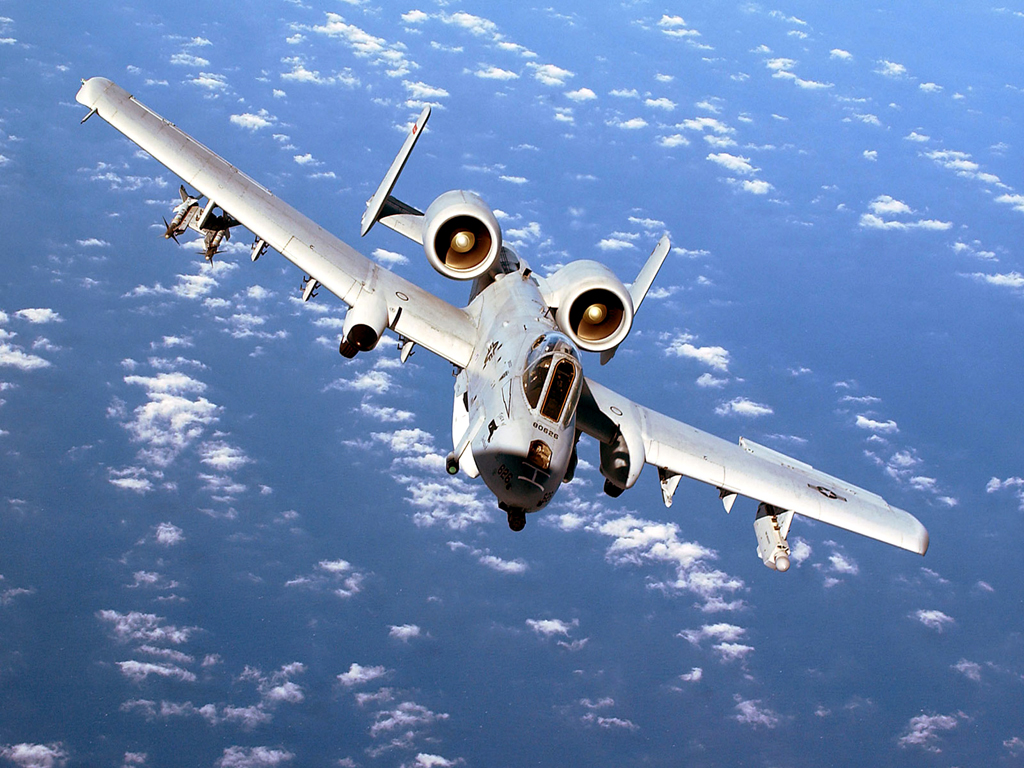Kartveli's A-10 Design Remains Vital As The U.S. Air Force Turns 70
Today, the U.S Air Force turns 70 years old.
Since the U.S. military's first aircraft purchase from the Wright brothers in 1909, the A-10 Thunderbolt II, nicknamed the "Warthog", is perhaps the most effective aircraft design in history. The A-10 has played a vital role in every theatre of war since the 1970's and is feared by every enemy who has encountered the nose-mounted 30mm Gatling gun and the plane's legendary durability.
A-10 "Warthog". Image by U.S. Air Force
The U.S. has put off the retirement of a 1970s era fighter plane, citing its effectiveness in the fight against the Islamic State military group among the reasons for keeping the jets flying.
The A-10 is a close-support aircraft designed by Alexander Kartveli in the early 1970s to counter Soviet armored forces. The twin-engine jet is not fast but is able to engage a wide variety of ground targets with its main gun, a 30mm cannon, as well as missiles, rockets and other munitions launched or dropped from wing pylons. Like many of Kartveli's airplane designs, the plane is also extremely durable and can withstand considerable damage from ground fire and keep flying.
Major role in Iraq War, Afghanistan
The A-10 was first used in combat during the 1991 Gulf War, destroying thousands of Iraqi tanks, armored vehicles and artillery pieces. It has played a role in most major U.S. military action since then, including the Balkans conflict in the late 1990s, the Iraq War and Afghanistan.
The U.S. Air Force has called for retiring the A-10, citing budget savings and saying the aircraft's role can be filled by newer, more versatile planes. But the 2017 Defense Department budget says the Warthog will keep flying at least through 2022.
Efficient in combating IS
Last year, former U.S. Defense Secretary Ashton Carter told Congress the A-10's usefulness combating IS in Iraq and Syria is one reason the Pentagon wants to keep the plane.
"I saw some of the A-10s that are flying bombing missions against ISIL when I was at Incirlik Air Base in Turkey last December, and we need the additional payload capacity they can bring to the fight," Carter told a House Appropriations subcommittee. "We're pushing off the A-10's final retirement until 2022 so we can keep more aircraft that can drop smart bombs on ISIL."
ISIL is another acronym for Islamic State.
Sen. John McCain, a long-time supporter of the A-10, said last year he was pleased the Warthog would remain in the U.S. arsenal.
“I look forward to seeing our A-10 pilots continue to make important advances in the fight against ISIL in the Middle East, boosting NATO’s efforts to deter Russian aggression in Eastern Europe, and supporting vital missions for U.S. national security wherever they are needed,” McCain said in a statement.
Kartveli's P-47 and A-10 flying together. Image by U.S. Air Force

